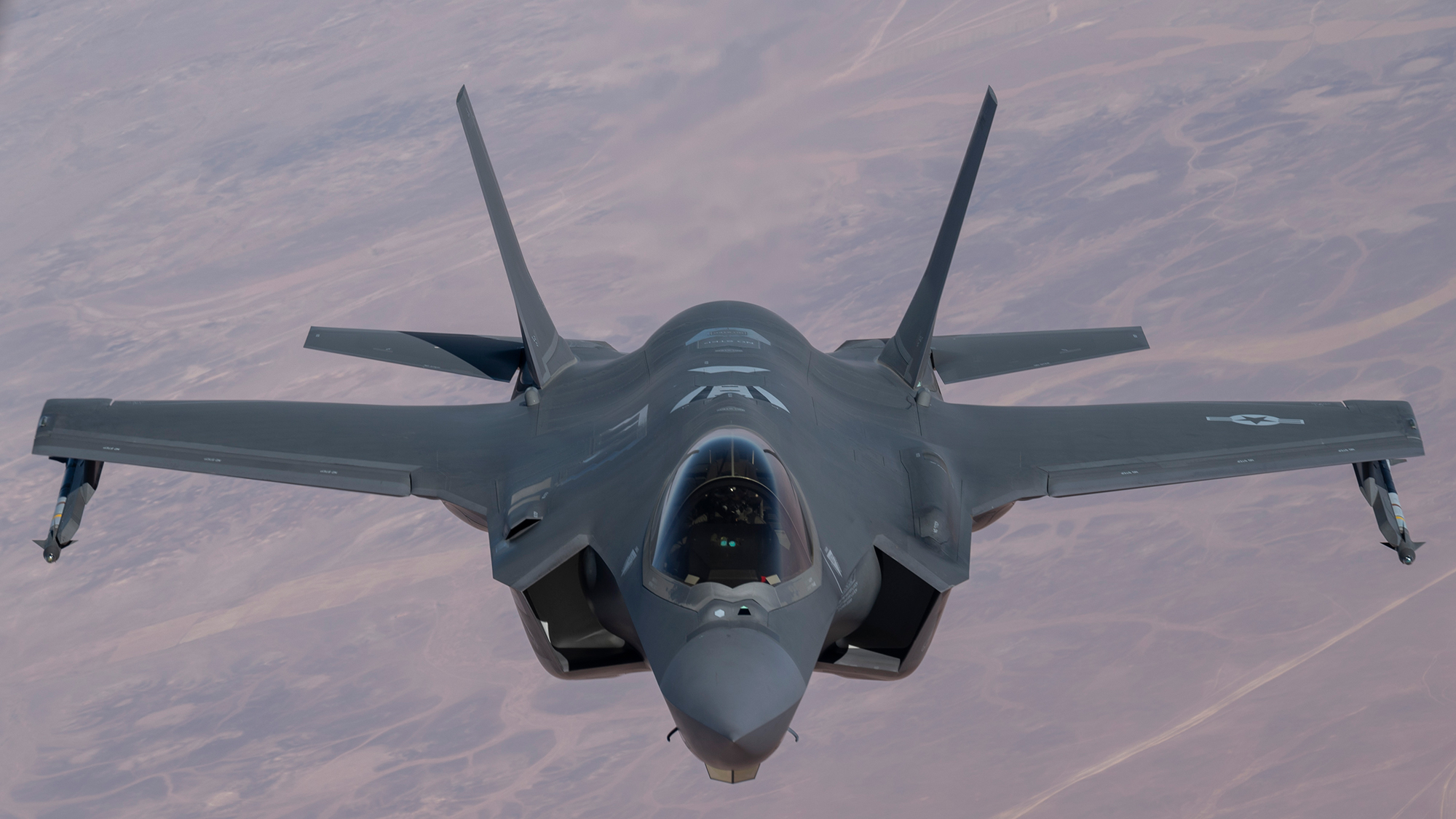

The F-35 is built for a war fought with missiles. The United States’ newest stealth fighter comes in three flavors: F-35A for the Air Force, F-35B for the Marine Corps, and F-35C for the Navy. All variants are built around a shared architecture and mission: to destroy enemy targets, while evading detection long enough to return and fly another day. These missions are, thanks to the specific nature of stealth, at cross-purposes: weapons carried externally by a plane make it more visible to radar, undermining stealth, while only storing weapons internally limits what a fighter can bring to battle.
On September 25, the Air Force publicly stated it had earlier that month awarded a contract to defense giant Northrop Grumman Defense Systems to start work on the Stand-in Attack Weapon, or “SiAW.” The contract, with a value of up to $705 million, is for “an advanced air-to-surface missile providing stand-in platforms the ability to rapidly strike a wide variety of targets.”
“Air-to-surface” encompasses virtually everything not in the sky or orbit as a potential target, and given that the F-35 is designed to fight at sea as well as over land, it includes ships, tanks, buildings, and anything else below. Northrop Grumman, in a September 25 release, emphasized that the SiAW will “provide strike capability to defeat rapidly relocatable targets as part of an enemy’s anti-access/area denial environment.”

“Anti-access/area denial” is modern military jargon for an old concept. The terms essentially mean weapons that will attack and threaten to destroy planes, boats, and other enemies that move too close to the defenses. Because weapon technologies adapt, the military uses a catch-all term, though some specific examples are useful for understanding these techniques. On land and in the sea, mines are a kind of denial technology, as they threaten anyone attempting passage with an abrupt and explosive end. For aircraft, anti-air missiles can deny aircraft safe flight, as can jammers that interfere with sensors like radar or GPS. For marines advancing up a beach, or soldiers fighting through a forest, artillery fire is an attempt to deny access. Anti-ship missiles, like their anti-air counterparts, threaten any ship that advances within range, promising a watery death should they hit a vulnerable enough spot.
In peacetime, these defenses serve as a warning, as an ominous threat of what a country could threaten should hostilities break out. Should the United States go to war against a country with such defenses, it will want to destroy as many of them as it can, while allowing its own forces to get close enough. This is where a weapon like the SiAW comes into play.
The SiAW is designed to be carried internally by the F-35, Janes reports. That means the stealth fighters can use the weapon without compromising their stealth, as weapons carried externally make the planes more visible on radar. Stealth is largely a material and structural technology, where the specific shape and texture of a plane are used to minimize how few radio waves are reflected back towards the radar that emitted them. Earlier in September, the efficacy of this stealth was clearly on display, after an F-35B pilot ejected and the Marine Corps turned to the public for help tracking down the missing plane.
Stealth ensures that the F-35s can get closer to their targets than they would without it. Air and Space Forces Magazine reports that the Air Force is setting the targets for the SiAW as air defense radars, command posts, ballistic and cruise missile launchers, GPS jamming systems, anti-satellite systems, and “other high-value or fleeting targets.” Destroying any and all of those targets make it easier for other parts of the military to advance and survive, including jets with more weapons that aren’t stealthy.
The Air Force has declined to give the range for the new SiAW weapon, though the operating assumption is that it will be longer range than the High-speed Anti-Radiation Missile (HARM) air-to-surface missiles in use today. Those missiles have a stated range of over 30 miles. The Air Force aims to have the SiAW at an initial operational capability by 2026; it expects to buy 400 of the missiles by 2028, with up to 3,000 eventually.
Should the missile deliver as promised, it will allow F-35s to launch attacks on targets at useful ranges, giving the military more options than just long-range cruise missiles to destroy important targets in advance of an assault. Unlike cruise missiles, SiAWs fired from F-35s or other planes will be able to catch more mobile vehicles, ensuring that if there’s a weapon that can be relocated, the missile is a tool to destroy it before it disappears.
